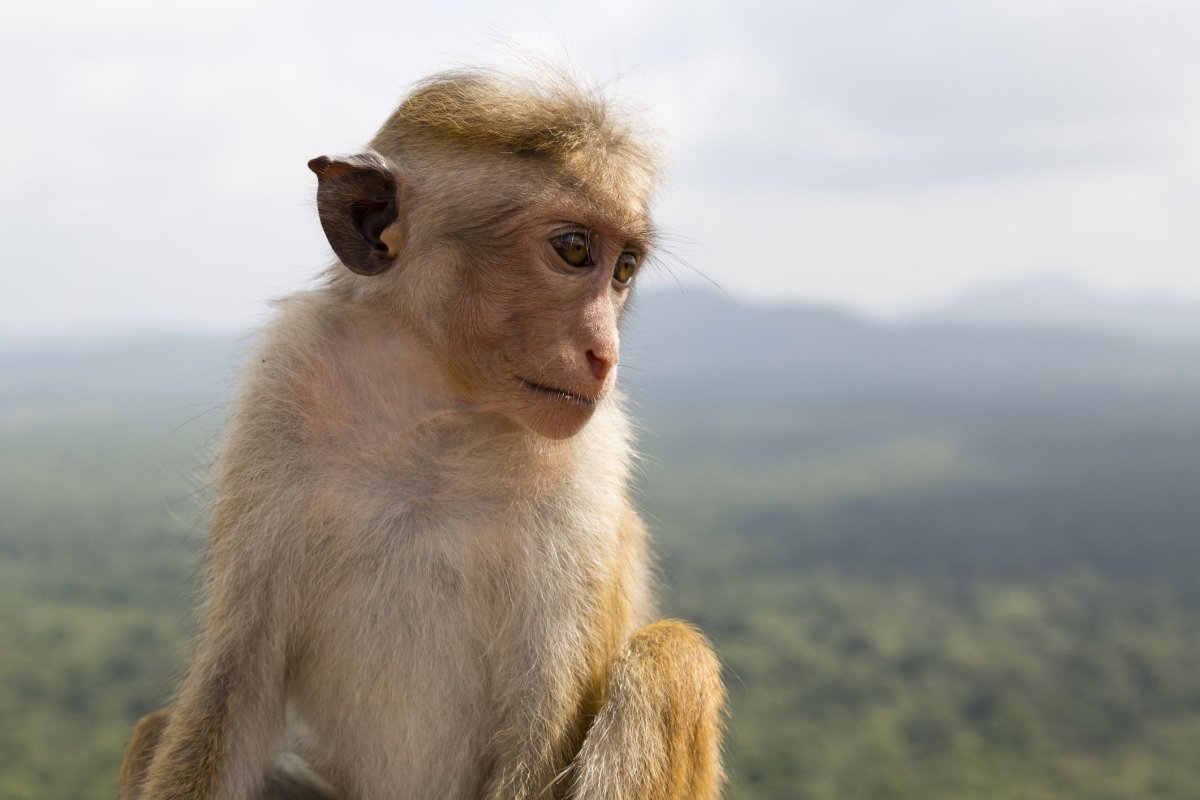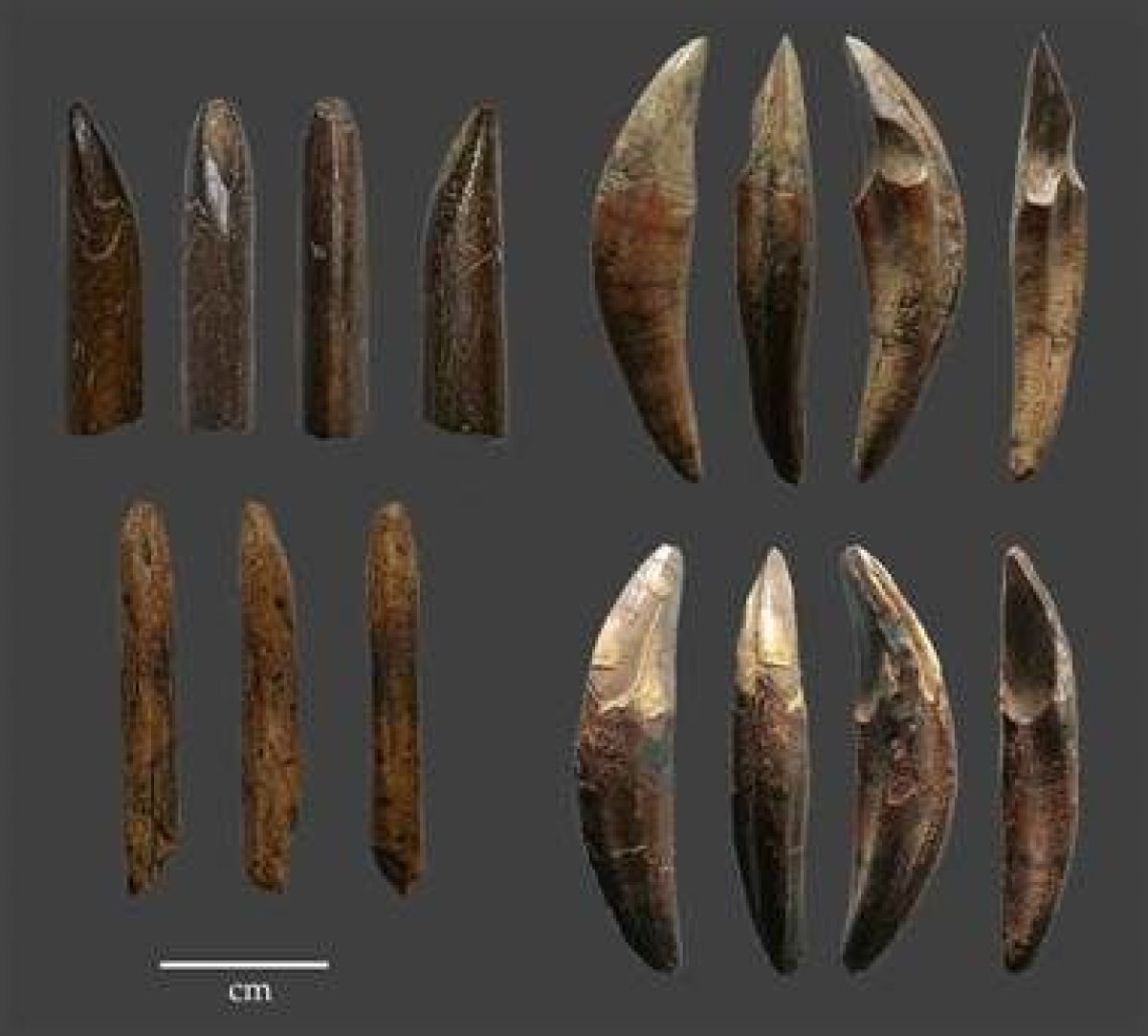The first humans to arrive in Sri Lanka were able to survive by hunting monkeys then making weapons from their bones, scientists have said. The discovery shows these early humans came to thrive in an extreme, rainforest environment—one that our ancient hominin relatives do not appear to have mastered.
Traditionally, early humans are thought of as living in semi-arid environments like savannahs, where they had a stable food source of megafauna. However, as they migrated outwards to Europe and Asia, they started colonizing more diverse environments, such as coastal and mountain regions.
The rainforest was generally thought to be a no-go area for our ancestors. This view has been compounded by the lack of fossil evidence—the rainforest, unlike a savannah, is not a good environment for archaeological preservation.
However, new evidence is starting to change our ideas. In a study published in Nature Communications, researchers show how the first humans to arrive in Sri Lanka were able to live in the rainforest by hunting small mammals—mainly monkeys and squirrels. What's more, they found that these Homo sapiens were purposefully targeting adult monkeys, ensuring they remained a sustainable source of food for tens of thousands of years.
The researchers, led by Patrick Roberts from Germany's Max Planck Institute for the Science of Human History, studied 14,000 bones of small mammals dating from between 45,000 and 3,000 years ago. The earliest bones, which came from the Fa-Hien Lena cave, showed clear evidence of human predation—bones with specific cut marks were found alongside human-made tools.
Previously, it was thought the hunting of small mammals—considered a sign of technological and behavioral complexity—started from around 20,000 years ago. The discovery of humans hunting monkeys and squirrels in a rainforest shows just how adaptable Homo sapiens are as a species, the scientists say.

"Emerging evidence suggests our species may be unique in the environmental plasticity it demonstrated in adapting to diverse environments when compared to other hominin species," Roberts told Newsweek. "The available evidence suggests that humans clearly targeted prime aged adults. This indicates projectile hunting and targeting of the largest animals with the most meat.
"This might be expected to have significant impacts on primates populations. However, we see that humans hunted these primates for over 40,000 years—and these primates are still present on the island today. This implies some sort of sustainable hunting strategy, showing that humans were in tune with their environments."

He said the tools made from the monkey bones were generally made into points: "It seems that these were then used in projectile technologies to then hunt more monkeys," Roberts said. "As such, it is a quite fascinating example of specialised monkey hunting."
The team now plans to take a more detailed look at the bone tools to see if there is evidence of impact fractures, potentially showing they were used as projectiles—being thrown as spears, for example. "Do we see repeated evidence for impact fractures? And therefore use of both of these types of tools as projectiles?" Roberts said.
"We are also looking for more palaeoecological records to see if our species was indeed unique in its ability to inhabit a number of diverse extreme environments relative to other hominins," he added.

James Cole, an archaeologist at the U.K.'s Brighton University, told Newsweek the results are significant as they show these small mammals were being hunted by humans throughout the history of the Fa-Hien Lena cave's occupation. "As the papers points out, this is highly irregular even in modern day ethnographic groups hunting in tropical rain-forests which are extremely challenging ecological environments," he said. "It begs the question as to why they seemed to favoured such animals as monkeys and giant squirrels? Was it just about raw materials for bone tools for example? Although highly unlikely there was one specific reason, the exploitation of small mammals does suggest that Homo sapiens at this time were behaviorally adaptable enough to perhaps innovate novel hunting technologies or strategies underpinned by a high degree of cognitive plasticity present within our species."
Cole said that the study indicates that as we left Africa, "we were carrying with us a malleable behavioral package that successfully enabled us to have resilience across distinct ecological challenges at a time with broad climatic fluctuations."
This story has been updated to include quotes from James Cole.
Uncommon Knowledge
Newsweek is committed to challenging conventional wisdom and finding connections in the search for common ground.
Newsweek is committed to challenging conventional wisdom and finding connections in the search for common ground.
About the writer
Hannah Osborne is Nesweek's Science Editor, based in London, UK. Hannah joined Newsweek in 2017 from IBTimes UK. She is ... Read more
To read how Newsweek uses AI as a newsroom tool, Click here.








